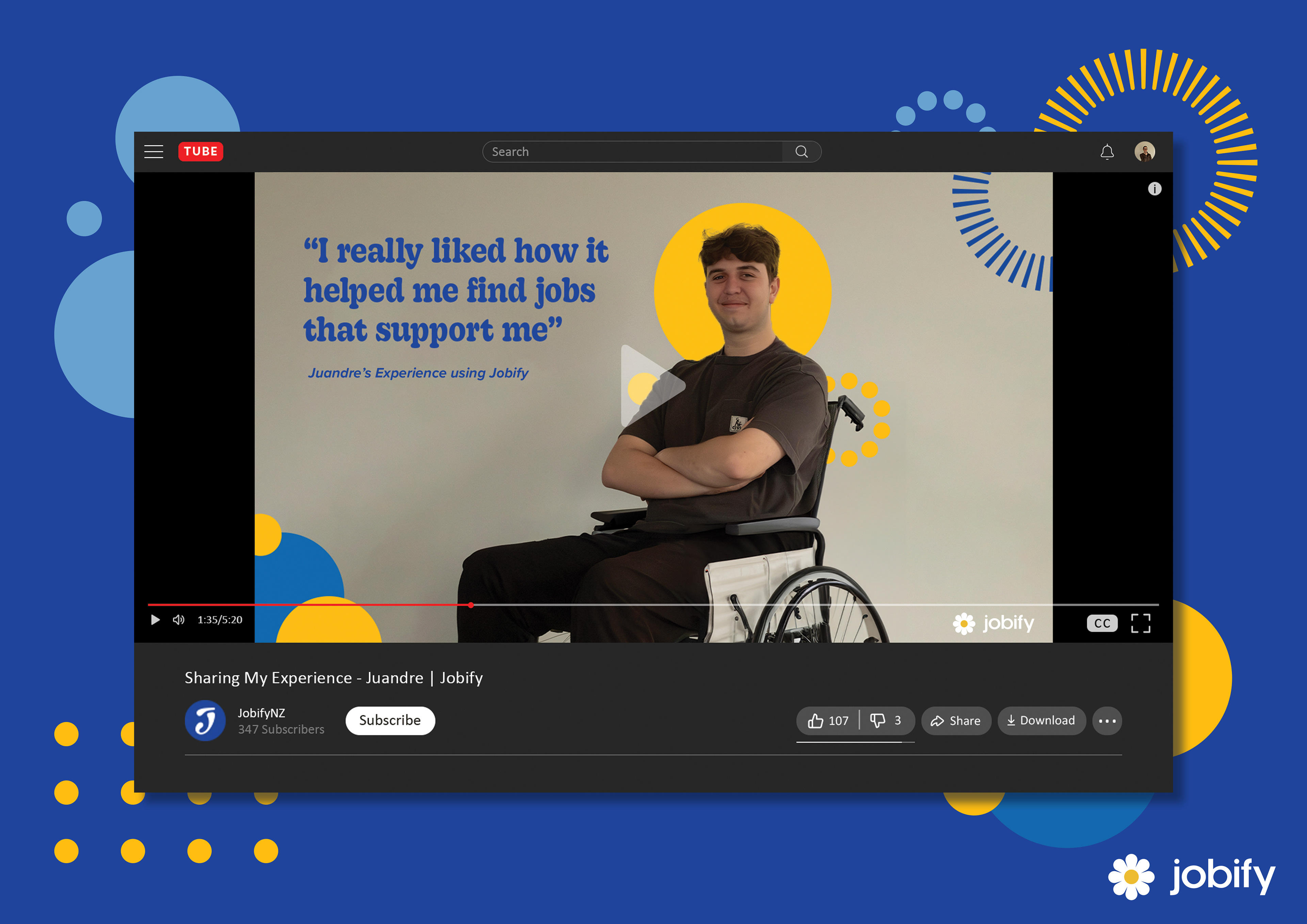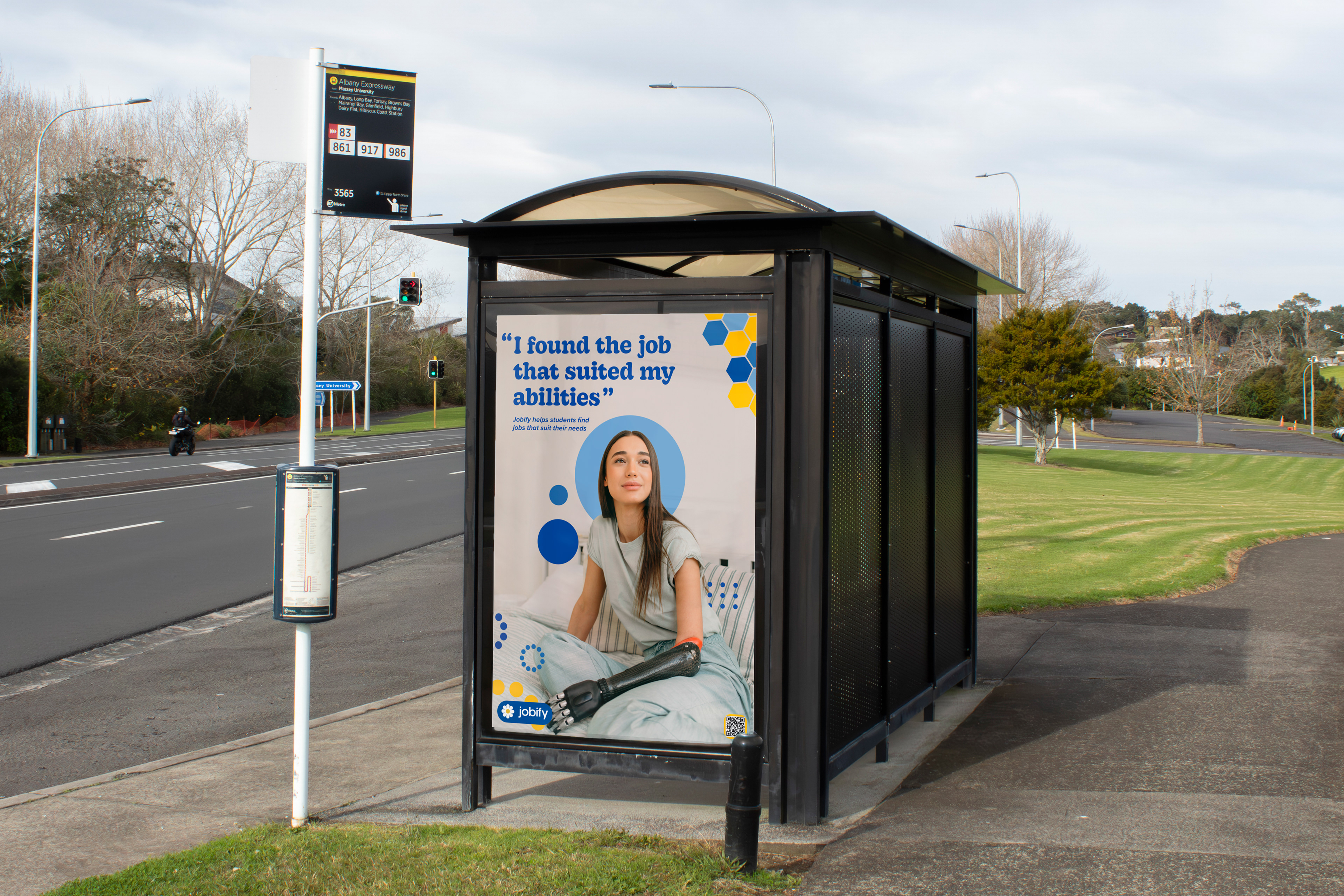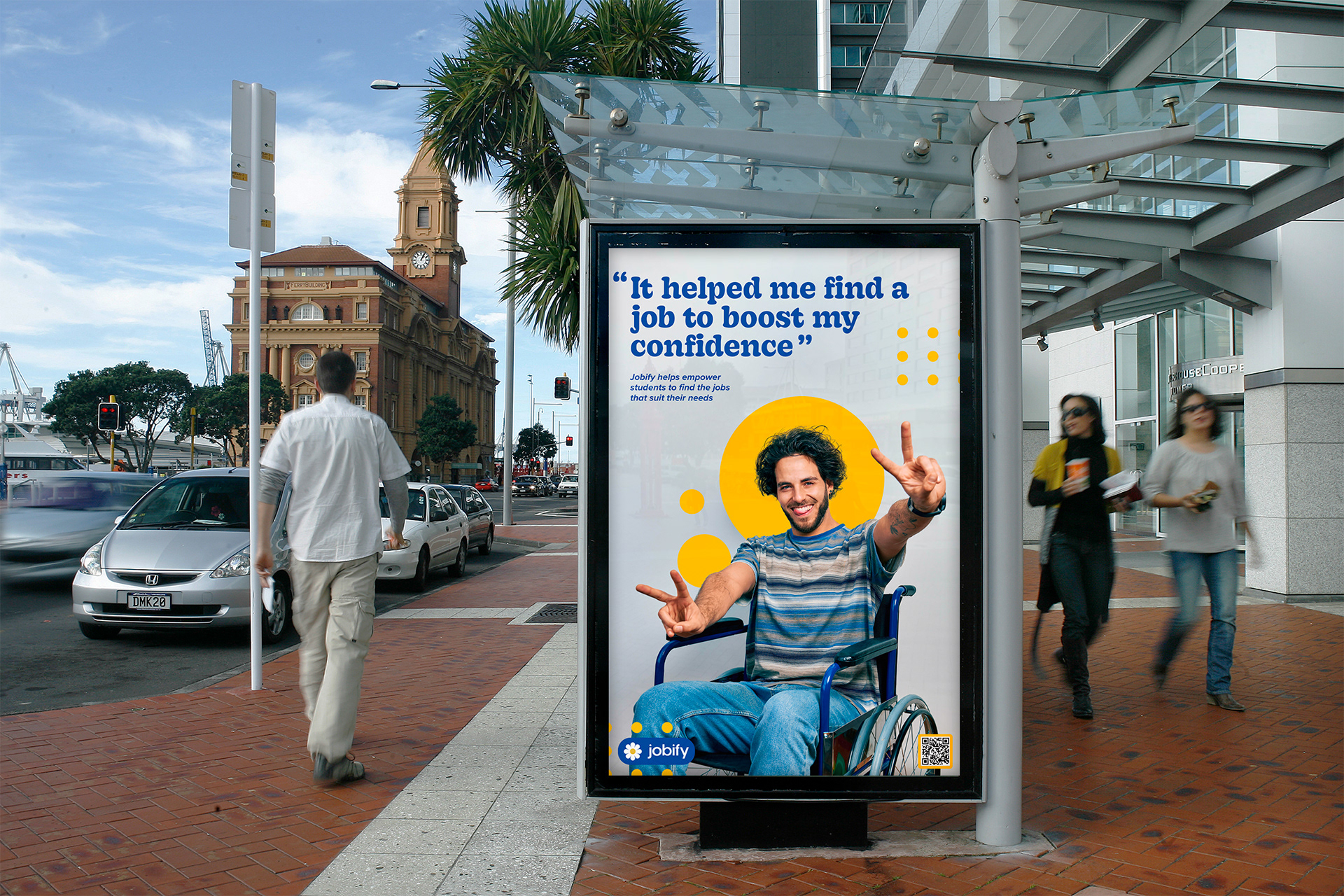Jobify is a revolutionary job-searching app designed for underrepresented individuals who face prejudice when entering the job market in New Zealand. Jobify expertly matches people with job opportunities that include their own needs. Empowering those often overlooked, Jobify transforms the job market into a realm of equal opportunity and inclusion.
The brief asked us to solve a real-world or personal problem. I chose to address the challenges of job hunting in New Zealand—particularly for underrepresented groups such as disabled individuals and ethnic minorities. Research revealed that discrimination and accessibility barriers are major factors, with 72% of disabled New Zealanders not currently employed despite wanting to work, and 1 in 4 Kiwis living with a disability.
My goal was to design a solution that not only helped these individuals apply for jobs, but also find workplaces that meet their needs—like accessible environments or inclusive values. I backed this with research into user needs, employment statistics, and accessibility standards, which informed both functionality and visual design.
For example, I used high-contrast, accessibility-friendly colour combinations like blue and yellow, which perform well across common types of colour blindness. This research-led approach shaped the entire project—from audience insight to interface design and brand design.
For my solution, Jobify is a user-friendly, inclusive job-matching app designed to connect users with employers based on mutual needs and values. Inspired by platforms like Tinder and Zeil, it uses a swipe-based system enhanced by meaningful labels—like Accessibility or LGBTQ+ Friendly—to help underrepresented job seekers in New Zealand find roles that truly fit. Features include resume uploads and direct chat with matched employers, streamlining the application process.
For this project, I designed the full UI, branding, and promotional materials, including bus ads, social media content, and posters. The goal: to increase interview opportunities and job placement rates for underrepresented communities.



